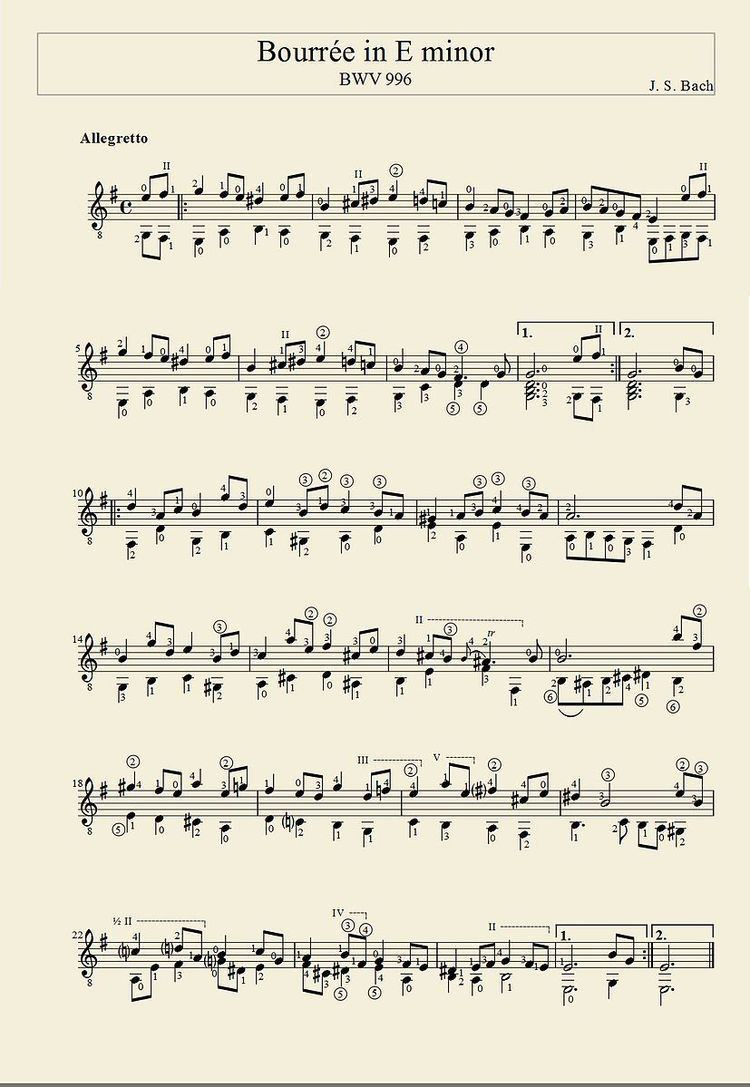Released 1 August 1969 | Length 3:46 | |
 | ||
Genre Jazz, Jazz Fusion, Progressive rock Writer(s) J.S. Bach, arr. Ian Anderson | ||
Bourrée in E minor is a popular lute piece, the fifth movement from Suite in E minor for Lute, BWV 996 (BC L166) written by Johann Sebastian Bach. This piece is arguably one of the most famous pieces among guitarists.
Contents
A bourrée was a type of dance that originated in France with quick duple meter and an upbeat. Though the bourrée was popular as a social dance and shown in theatrical ballets during the reign of Louis XIV of France, the Bourrée in E minor was not intended for dancing. Nonetheless, some of the elements of the dance are incorporated in the piece.
Bach wrote his lute pieces in a traditional score rather than in lute tablature, and some believe that Bach played his lute pieces on the keyboard. No original script of the Suite in E minor for Lute by Bach is known to exist. However, in the collection of one of Bach's pupils, Johann Ludwig Krebs, there is one piece ("Praeludio – con la Suite da Gio: Bast. Bach") that has written "aufs Lauten Werck" ("for the lute-harpsichord") in unidentified handwriting. Some argue that despite this reference, the piece was meant to be played on the lute as demonstrated by the texture. Others argue that since the piece was written in E minor, it would be incompatible with the baroque lute which was tuned to D minor. Nevertheless, it may be played with other string instruments, such as the guitar, mandola or mandocello, and keyboard instruments, and it is especially well-known among guitarists. The tempo of the piece should be fairly quick and smooth, since it was written to be a dance. It also demonstrates counterpoint, as the two voices move independently of one another. Furthermore, the Bourrée in E minor demonstrates binary form.
In classical music
Robert Schumann quotes the first 14 notes of this memorable theme (transposed to G minor) in #3 of the Op. 60, 6 Fugues on B–A–C–H, where he neatly combines it with the B♭ A C B motif. There also appears to be an echo of this reference in the next fugue, #4.
In popular culture
The piece has been used by a number of musicians:
